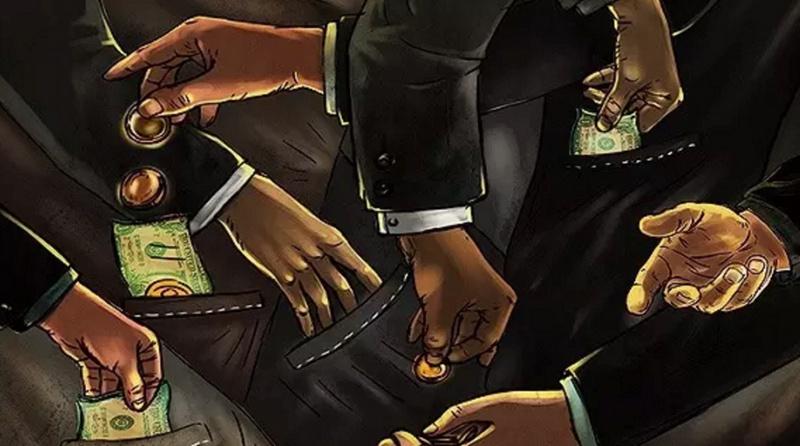The Wall Street Journal: Things You Didn't Know About Musk's Acquisition of Twitter
*Original Title: 《 The Real Story of Musk's Twitter Takeover *
Original Source: 《The Wall Street Journal》
Original Author: Walter Isaacson
Original Translation: czgsws, BlockBeats
The biography of the world's richest man, OpenAI and SpaceX founder, owner of X (formerly Twitter), and Tesla CEO Elon Musk, titled "Elon Musk," will be officially published on September 12. The book is written by Walter Isaacson, a contemporary American biographer known for "Steve Jobs." The Wall Street Journal has excerpted parts of the "Twitter Wars," which BlockBeats has compiled and translated as follows:
Gaming Addict
In April 2022, everything seemed to be going remarkably well for Elon Musk. Tesla's stock price had risen 15 times in five years, surpassing the combined total of the next nine automotive companies. SpaceX launched twice as many rockets into orbit in the first quarter of 2022 than all other companies and countries combined. Meanwhile, Starlink satellites had just successfully created a private internet, providing network services to 500,000 users across 40 countries, including Ukraine.
If Musk could navigate through 2022 smoothly, it would be a glorious year, but that was clearly not in his nature.
Shivon Zilis, a manager at Neuralink (Musk's company focused on implantable brain-machine interfaces) and the mother of two of Musk's children, noticed in early April that Musk was like a video game addict, unable to unplug despite his victories, feeling restless.
Shivon Zilis advised Musk, "You don't have to be in a constant state of war, or do you find greater psychological comfort when you're in a wartime mentality?"
"This is part of my default setting; I always want to push the chips back to the table or challenge the next level of the game," Musk replied.
Fatefully, this unsettling period of success coincided with his exercise of some soon-to-expire stock options, leaving him with about $10 billion in cash.
"I don't want to leave it in the bank," he said, "so I asked myself what product I like, and the answer was simple: Twitter." In January of that year, Musk secretly told his private business manager, Jared Birchall, to start buying Twitter stock.
Musk's aggressive acquisition of Twitter and its rebranding to X signified his current operational style: impulsive and irreverent. It was an addictive playground for him, featuring many characteristics of a campus, including mockery and bullying. But in the case of Twitter, the smart kids gained followers. They wouldn't be pushed down the stairs and beaten like Musk was in his childhood; owning it would make him the king of the campus.

Elon Musk (right) and Peter Thiel's company merged to form PayPal in October 2000. Photo credit: PAUL SAKUMA/AP
The Landscape Opens Up
Over twenty years ago, Musk founded a company called X.com, hoping to create a "universal application" that could handle all personal financial transactions and social relationships. After it merged with the payment service company PayPal, co-founded with Peter Thiel, Musk fought to keep X.com as the name of the merged company, but his new colleagues resisted, as PayPal had already become a trusted brand name, recognizable and impactful like today's Twitter, while the name X.com evoked thoughts of a "dirty website." Musk was ousted, but he remained steadfast.
Musk said, "If you just want to be a niche player, then PayPal is indeed a good name, but if you want to take over the world financial system, then X is a better choice."
When he began buying Twitter stock, Musk viewed Twitter as a way to realize his original vision, feeling that Twitter's name was too small.
Musk said, "Twitter could become what X.com was meant to be, and we could help save free speech in the process."
At that time, a new concern gradually emerged: Musk's growing worry about what he called the dangers of "woke culture," which he believed was infecting America.
Musk stated seriously, "Civilization will never evolve into a multi-planetary model unless the virus of 'woke culture' is stopped."
Musk's anti-woke sentiment was partly triggered by his eldest child, Xavier (then 16), deciding to transition.
"Hey, I'm transgender, and my name is Jenna now," the child texted Musk's brother's wife, "Don't tell my dad."
Later, Jenna severed all ties with Musk, believing that any wealthy person was evil. Despite Musk's repeated attempts to reach out, Jenna remained unwilling to spend time with him. He partly blamed this on the ideology absorbed at her progressive school in Los Angeles, Crossroads School. He believed that Twitter had already been influenced by leftist voices.
"What Twitter Needs is a Fire-Breathing Dragon"
The night after news of Musk's stock purchases became public, he called then-Twitter CEO Parag Agrawal, and they decided to meet secretly for dinner with Twitter board chairman Bret Taylor on March 31.
Musk found Agrawal quite likable. "He's a really nice guy," he said. But that was the problem. If you asked Musk what qualities a CEO should have, being a genuinely nice person would not be among them. One of his maxims is that managers should not aim to be liked. After that meeting, he remarked, "What Twitter needs is a fire-breathing dragon, and Agrawal is not that."
At that time, Musk had not yet considered taking over Twitter personally. During their meeting, Agrawal invited him to join the Twitter board, and he agreed, but the calm was short-lived.
Musk's Vision for X.com
On the afternoon of April 6, the day after Musk announced he was joining the Twitter board, Musk's close friends—Luke Nosek and Ken Howery—expressed caution at a gathering, saying, "This could lead to trouble." Musk cheerfully acknowledged at the meeting, "Clearly, the asylum is run by the inmates." He was referring to Twitter's staff.
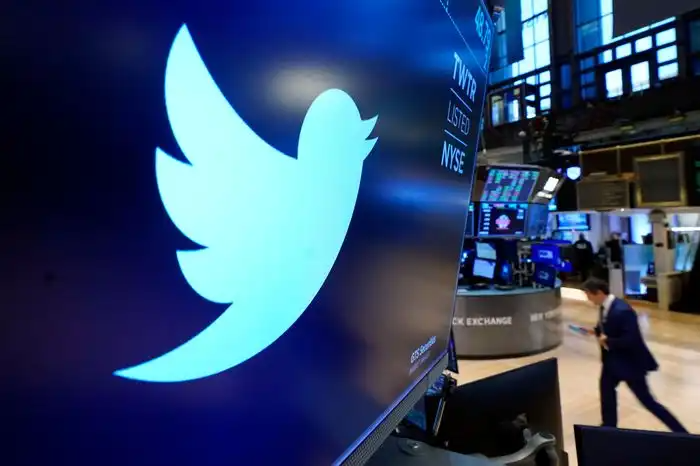
The Twitter logo on the floor of the New York Stock Exchange, November 2021. Photo credit: RICHARD DREW/AP
Musk reiterated his simple point that if Twitter stopped trying to limit users' speech, it would benefit democracy. Although Howery agreed with Musk's liberal views on free speech, he gently countered, "Should it be like a telephone system where the input on one end is exactly the same as the output on the other end? Or do you think it should be more like a system that manages the world's discourse, perhaps incorporating some intelligence in the algorithms to prioritize or deprioritize things?"
"Yes, that's a tricky question," Musk replied. "Another question is to what extent free speech should be elevated or amplified; perhaps the way tweets are promoted should be more open, maybe it could be an open-source algorithm on GitHub so people can filter it."
Musk then threw out some other ideas. "What if we charged people a small fee, like two dollars a month, for verification?" he asked. Musk believed that obtaining users' credit card information would eliminate "bots," provide a new revenue stream, and promote his goal of transforming Twitter into a payment platform, similar to his vision for X.com, where people could send money, distribute tips, and pay for stories, music, and video content. Since Howery and Nosek had worked with Musk at PayPal, they liked the idea.
"It could realize my original vision for X.com and PayPal," Musk said with a smile.
The next day, Musk's brother Kimbal told him over lunch that it would be best to launch a new social media platform based on blockchain. Musk was intrigued and entered a dazzling state. He half-jokingly suggested that maybe it could have a payment system using Dogecoin (DOGE), a semi-serious cryptocurrency he had been quietly funding its development. After lunch, he texted Kimbal detailing the idea of "a blockchain social media system that could handle payments and messaging like Twitter."
He then flew to Lanai Island in Hawaii for a quiet date with a woman he was occasionally seeing—Australian actress Natasha Bassett. But Musk didn't treat it as a relaxing mini-vacation; instead, he spent four days thinking about how to handle Twitter.
Most of the first night, Musk struggled to sleep, troubled by the issues facing Twitter. When he checked the list of users with the most followers, he found they were no longer very active. So at 3:32 AM Hawaiian time, he tweeted, "Most 'top' accounts rarely tweet, and the content is sparse. Is Twitter dying?"
About 90 minutes later, Twitter CEO Agrawal texted Musk, "You are free to tweet 'Is Twitter dying?' or anything else about Twitter, but I have a responsibility to tell you that this does not help me make Twitter better in the current environment." It was a restrained message, carefully worded.
When Musk received the text, it was just past 5 AM in Hawaii, but he was still wide awake. He shot back sternly, "What have you done this week? I won't join the board; it's a waste of time. I'm going to propose taking Twitter private."
Agrawal was shocked. "Can we talk?" he asked plaintively.
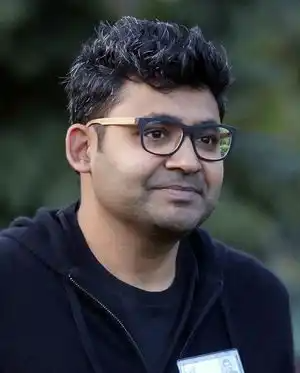
Parag Agrawal, photographed in July 2022, when Musk was acquiring Twitter, was the company's CEO. Photo credit: KEVIN DIETSCH/GETTY IMAGES
Within three minutes, Twitter board chairman Taylor texted Musk, requesting a similar conversation. "Can you give me five minutes to understand how this works?" he asked Musk.
"Fixing Twitter by chatting with Agrawal isn't going to work," Musk replied. "Severe action is needed."
Musk's "One Proposal"
Musk said that when he arrived in Hawaii, he clearly realized that he would not be able to fix Twitter or transform it into X.com by joining the board: "I decided I didn't want to be co-opted and become a board member, nor did I want to be some sort of sycophant on the board." There was another factor. Musk was feeling manic and acting impulsively.
As usual, his thoughts fluctuated wildly with his emotions. Just as he was vigorously pursuing the acquisition of Twitter, he was also texting Kimbal about their idea of starting a new social media company. "I think there needs to be a new social media company based on blockchain that includes payment features," he wrote.
But by later that afternoon (Saturday, April 9), he chose the idea of acquiring Twitter. "It already has a user base and needs this boost to launch X.com." He texted his private business manager Birchall.
Musk then flew to Vancouver to meet his on-again, off-again girlfriend Claire Boucher, an artist known as "Grimes." She had been urging Musk to come see her so she could introduce their son X (yes, X) to her parents and elderly grandparents. But when she was about to drive to see her parents, she decided to leave Musk at the hotel. "I could tell he was in stress mode," she said.
Indeed. Later that afternoon, Musk texted Twitter board chairman Taylor to formally express his decision. "After a few days of deep thought—this is clearly a serious issue—I have decided to proceed with taking Twitter private," he said.
That night, girlfriend Grimes returned to the hotel to find Musk relaxing by immersing himself in a new video game, "Elden Ring," which he had downloaded onto his laptop. The game features intricately rendered mysterious clues and bizarre plot twists, requiring players to maintain high levels of concentration, especially when calculating when to attack. Musk spent a lot of time in the game's most dangerous areas. "He didn't sleep," Grimes said, "he played until 5:30 AM."
Shortly after finishing, Musk tweeted, "I made an offer."
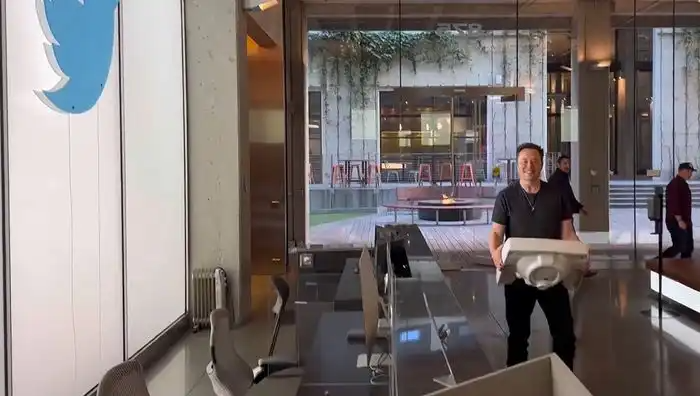
On October 26, 2022, just before the deal to acquire the company was about to close, Musk jokingly walked into Twitter headquarters carrying a sink. Photo credit: Musk's personal Twitter account
Musk then began seeking external investors to help fund the acquisition. He asked his brother Kimbal, but Kimbal declined. The fundraising effort was more successful under the leadership of Oracle founder Larry Ellison. "Yes, of course," Ellison replied when Musk asked if he was interested in investing in the deal.
"How much can you provide?" Musk asked. "I'm not asking you to do anything, but this deal is oversubscribed, so I have to reduce or kick out some participants."
"A billion," Ellison said, "or you name a number."
Ellison hadn't tweeted in ten years. In fact, he didn't remember his Twitter password, so Musk had to reset it for him in person. But Ellison believed Twitter was important. "It's a real-time news service; there's nothing better than it. If you agree it's important for democracy, then I think it's worth investing in."
"My Bullshit Detector Was Blaring Like a Red Alert"
Sam Bankman-Fried (SBF), the founder of the cryptocurrency exchange FTX, was eager to get involved in the deal but soon fell from grace. Morgan Stanley urged Musk to call SBF, saying he "would be in charge of the social media blockchain integration project" and was willing to invest $5 billion in the acquisition.
Although Musk had discussed the idea of building a social network on blockchain with Kimbal, he thought that approach was too slow to support the fast-paced Twitter posts. So he didn't want to meet SBF. When his bankers insisted on reiterating that SBF "could pay $5 billion," Musk directly responded to that information with a "dislike" emoji. "Blockchain Twitter is impossible because peer-to-peer networks can't support such high bandwidth and latency requirements," Musk stated, adding that he might meet SBF at some point, as long as it didn't involve a grueling blockchain debate.
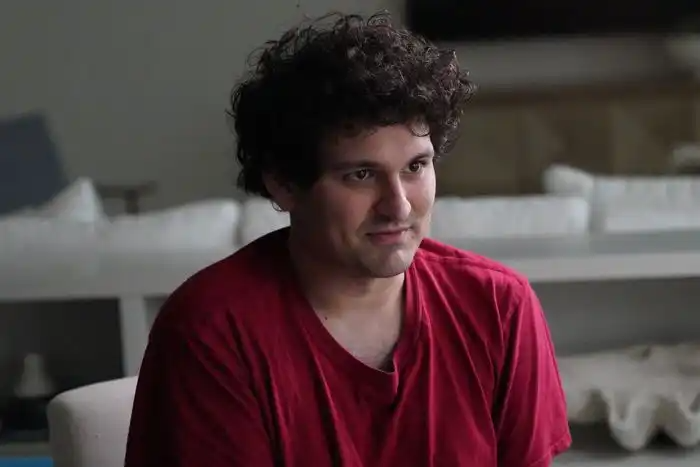
In December 2022, Musk rejected an offer from FTX founder Sam Bankman-Fried, who texted Musk saying he was "very excited about what we will do with TWTR." Photo credit: KENNY WASSUS/The Wall Street Journal
SBF then directly texted Musk, saying he was "very excited about what we will do with TWTR." SBF indicated that he owned $100 million worth of Twitter stock, meaning that once Musk took it private, his Twitter shares would convert to shares in the new company.
"Sorry, who sent this message?" Musk replied to the text. When SBF apologized and introduced himself, Musk briefly responded, "No problem, welcome aboard."
Musk's attitude led to SBF calling again in May. "My bullshit detector was blaring like a Geiger counter's red alert," Musk said. SBF started speaking rapidly, all about himself. "He spoke in a tone like he was sprinting, a mile a minute," Musk said. "I thought he should be asking me questions about the deal, but he kept telling me what he was doing. I thought, 'Dude, chill out.'" However, that feeling was mutual; SBF also thought Musk seemed crazy, and the call lasted half an hour, with SBF ultimately not investing.
Completing the Acquisition
Musk successfully raised funds, and Twitter's board accepted his plan at the end of April. That night, Musk did not celebrate but flew to the Starbase rocket launch site in southern Texas. There, he attended a routine nighttime meeting about redesigning the Raptor engine and spent over an hour thinking about how to handle their unexplained methane leak issue. The news about Twitter was the hottest topic worldwide, but SpaceX engineers knew he liked to focus on the task at hand, so no one mentioned it. Then he met Kimbal at a roadside café in Brownsville, where local musicians were playing. They stayed until 2 AM, sitting at a table in front of the stage, just listening to the music.
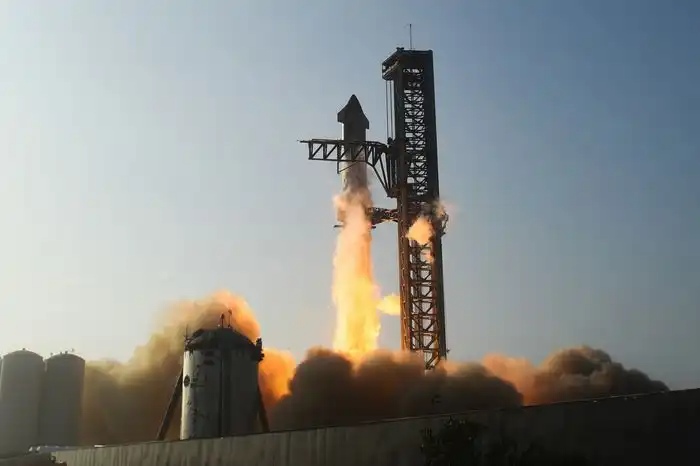
In April 2023, SpaceX's Starship rocket launched for testing in Boca Chica, Texas. Photo credit: PATRICK T. FALLON/AFP/GETTY IMAGES
In the months between the deal agreement and the formal closing, Musk's emotions fluctuated wildly. "I was very excited about finally realizing X.com, just as it should be, using Twitter as a catalyst!"
A few days later, his mood darkened. "I need to live at Twitter headquarters; the situation here is too difficult to handle, and it's really frustrating. I can't sleep there." Musk felt doubtful about accepting such a chaotic challenge. "I have a bad habit of biting off more than I can chew," Musk admitted in a long conversation. "I think I just need to think less about Twitter."
A whistleblower and others' revelations further convinced him that Twitter had lied about its actual user numbers, and his initial $44 billion offer was too high. He wanted a more suitable deal price. Throughout September, he had three to four calls a day with lawyers. Sometimes he would get emotional, insisting they could beat the lawsuit Twitter filed in Delaware. "They're throwing bricks while setting fire to the dumpster they're in," he said of the Twitter board. "I can't believe the judge would let this deal go through; it won't pass public scrutiny."
Musk's lawyers eventually convinced him that if they took the case to court, he would definitely lose, and it was best to just complete the deal on the original terms. By then, Musk had even regained some enthusiasm for taking over the company. "You could say I should pay a premium because the people running Twitter are fools and idiots, and Twitter has so much potential; there are many things I can fix." Ultimately, Musk agreed to formally complete the deal in October.
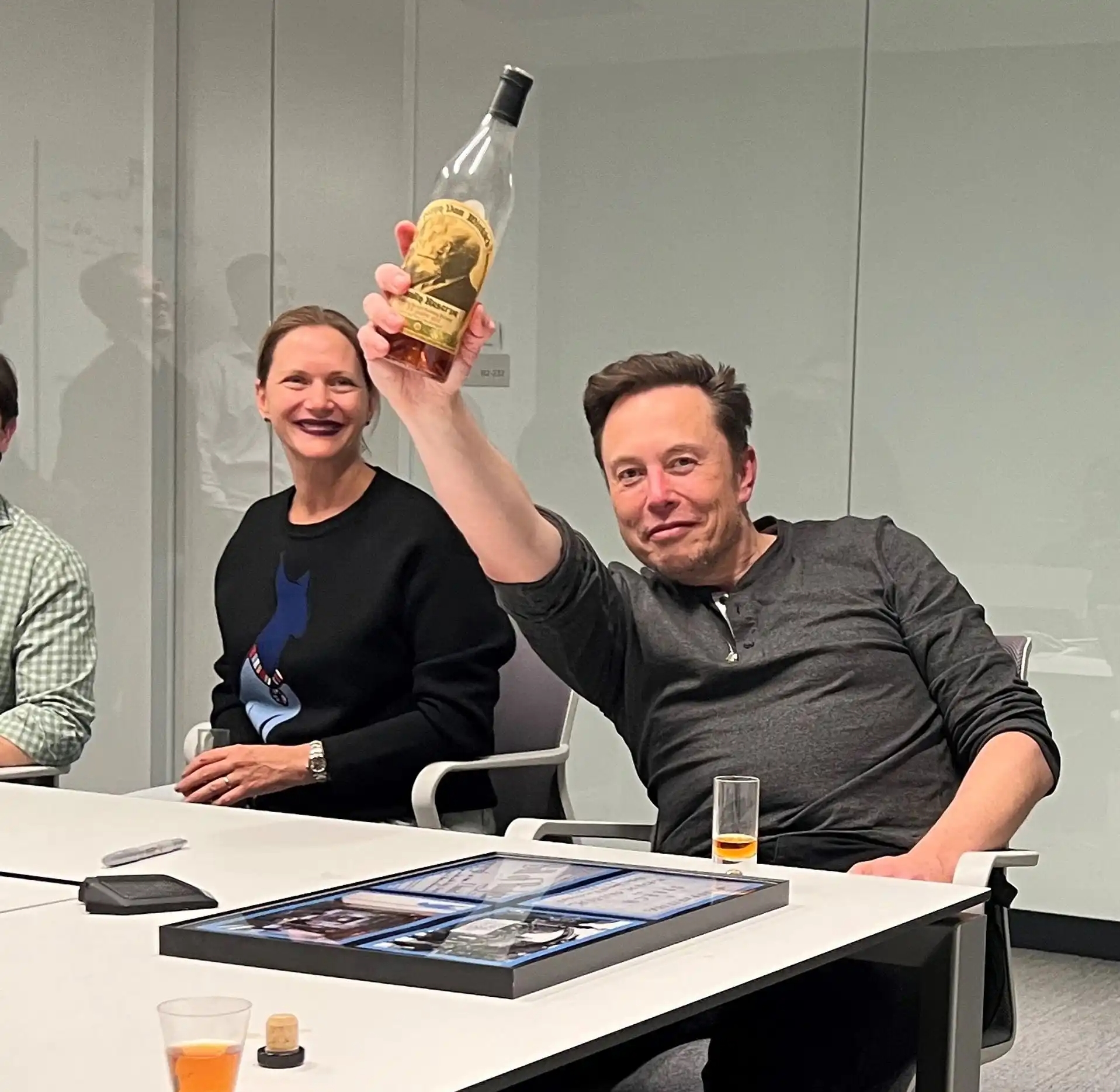
On October 27, 2022, Musk celebrated the completion of the Twitter deal with a bottle of Pappy van Winkle bourbon. Photo credit: WALTER ISAACSON
"All These Damn Birds Have to Go"
Musk planned to visit Twitter in San Francisco on Wednesday, October 26, to explore and prepare for the deal's formal completion scheduled for Friday. As he wandered around headquarters, he seemed surprised. The headquarters is located in a 10-story Art Deco building built in 1937, formerly a commodities market, which had been renovated in a tech-chic style, featuring a café, yoga room, gym, and game room. The spacious café on the ninth floor offered free meals, from handcrafted burgers to vegan salads. A sign on the restroom read, "Gender diversity is welcome here," and as Musk rifled through cabinets filled with Twitter-branded merchandise, he found T-shirts emblazoned with "Stay Woke," waving one as an example of what he believed had infected the company.
There was a fundamental divergence between Twitter's and Musk's visions for the commercial metaverse. Twitter prided itself on being a friendly platform where coddling was considered a virtue. "We absolutely have a high degree of empathy and care deeply about inclusivity and diversity; everyone needs to feel safe here," said Leslie Berland, who served as Chief Marketing and People Officer before being fired by Musk. The company had established permanent work-from-home options and allowed for a mental "day off" each month. One of the company's popular phrases was "psychological safety." Careful not to cause discomfort.
When Musk heard the term "psychological safety," he smirked, disagreeing. He believed it was the enemy of urgency and progress. His favorite buzzword was "hardcore." He believed discomfort was a good thing, a weapon against complacency. Holidays, work-life balance, and "mental health days" had nothing to do with him.
He first found it amusing, then grew to loathe the iconic blue bird logo that was everywhere within Twitter. Musk was not a cheerful person; he preferred dark and stormy drama over breezy and light-hearted chit-chat. "All these damn birds have to go," he told a mid-level manager.
The Twitter deal was scheduled to close on Friday. By that morning, an orderly transition had been laid out. Funds would transfer, stocks would delist, and Musk would gain control. This would allow Agrawal and his senior Twitter executives to collect severance packages and stock options.
But Musk believed he didn't want it that way. The afternoon before the scheduled close, he meticulously planned a jiu-jitsu maneuver: he would force a rapid close that night. If his lawyers and bankers timed everything correctly, he could "have reason" to fire Agrawal and other Twitter executives before their stock options vested.
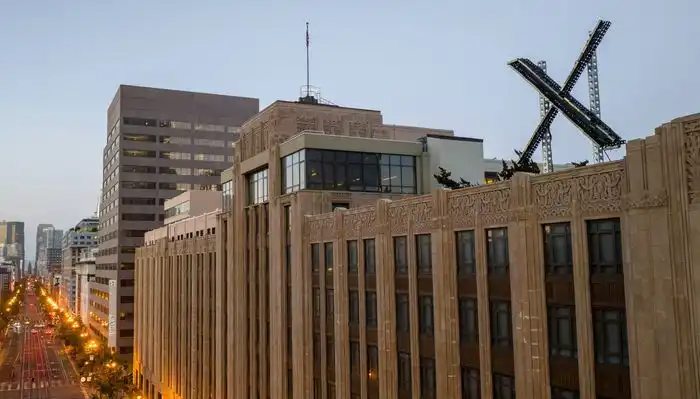
On July 29, 2023, a new X sign was erected on the roof of Twitter's headquarters in San Francisco. Photo credit: JOSH EDELSON/AFP/GETTY IMAGES
It was bold, even cruel. But Musk believed it was justified because he was convinced that Twitter's management had misled him. Late Thursday afternoon, as the plan unfolded, Musk told everyone, "Choosing to close tonight versus tomorrow morning, there will be a $200 million difference in the cookie jar."
At 4:12 PM Pacific Time, once they confirmed the funds had transferred, Musk pulled the trigger to complete the deal. At that moment, his aides handed termination letters to Agrawal and three of his executives. Six minutes later, Musk's head of security arrived at the second-floor conference room, stating that everyone had "exited" the building and their access to email had been cut off.
Instantly cutting off email was part of the plan. Agrawal had prepared a resignation letter citing the change in control. But after his Twitter email was cut off, he took a few minutes to send the document to Gmail. By then, he had already been fired by Musk.
"He tried to resign," Musk said.
"But we beat him," his hired lawyer Alex Spiro replied.



